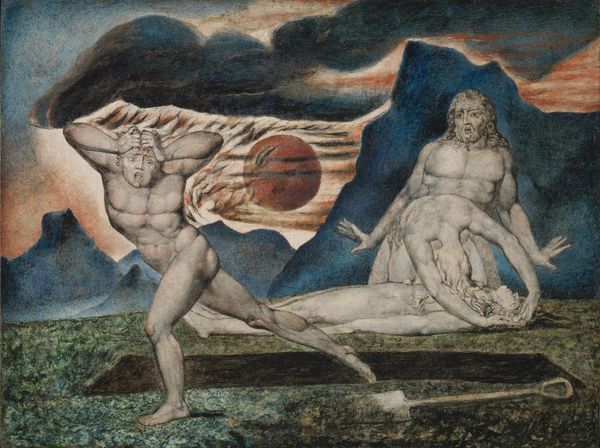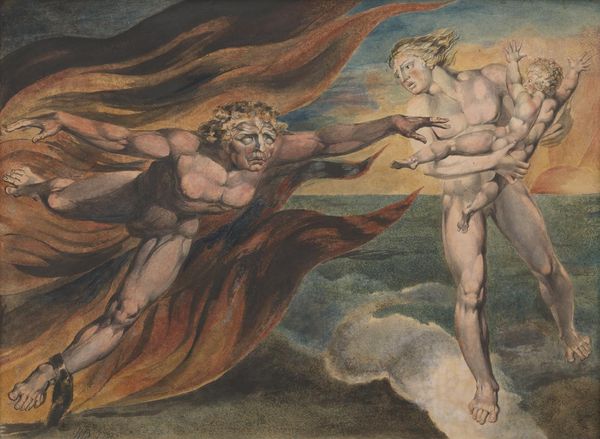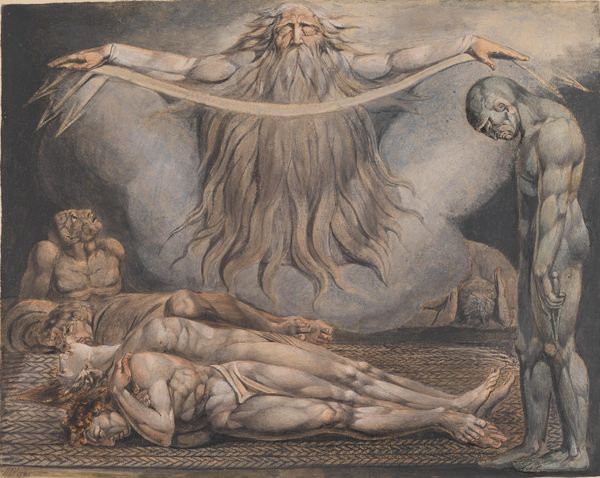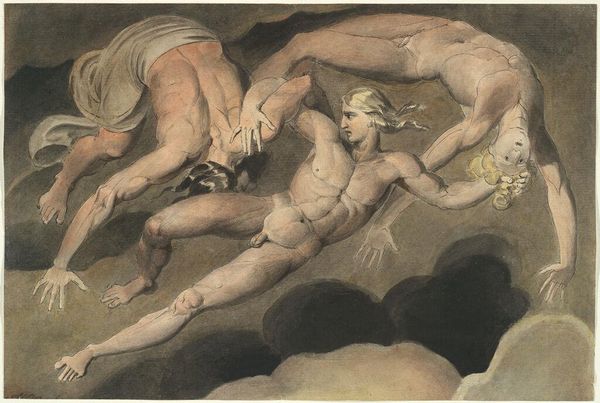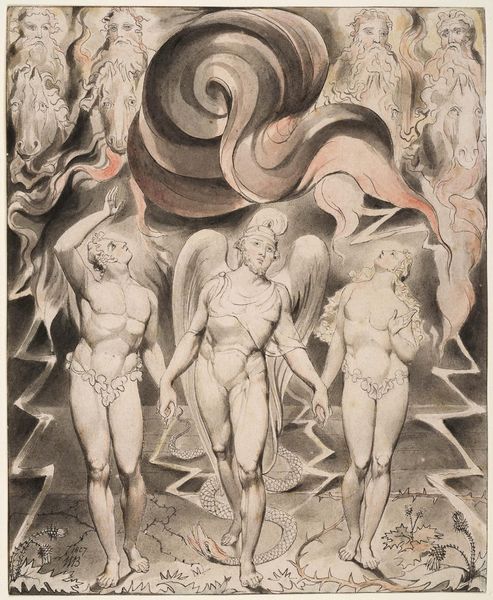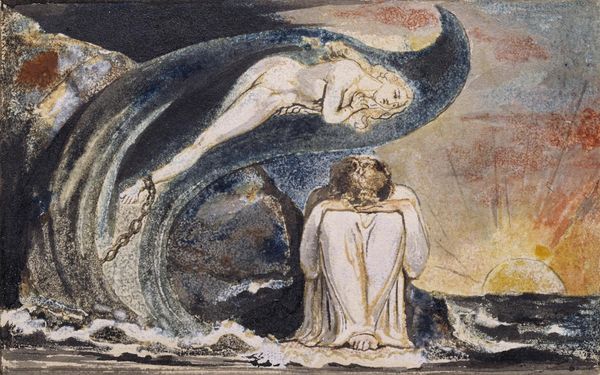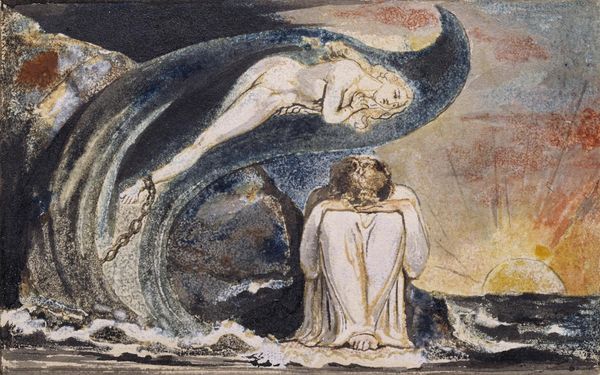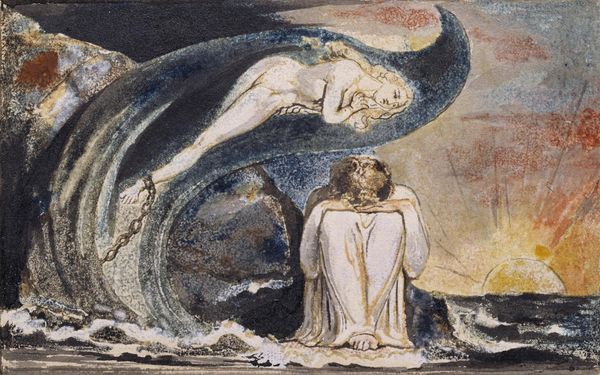
Dimensions: support: 325 x 433 mm frame: 367 x 473 x 44 mm
Copyright: NaN
Editor: William Blake’s "The Body of Abel Found by Adam and Eve" presents a scene of raw emotion. The figures are so dramatic, almost theatrical. What story do you see unfolding here? Curator: For me, it's a vision of primal grief. Blake isn't just illustrating a Bible story; he's exploring the shattering of innocence. Notice how Adam seems to recoil not just from Abel's corpse but also from the ghastly sunrise, as if reality itself has become unbearable. Editor: So, it's about more than just the biblical narrative? Curator: Precisely. It's about the moment when humanity confronts death for the first time, a truly terrible dawn. Blake invites us to feel that shock, to question our own relationship with mortality. Doesn’t it make you wonder what dawns await us? Editor: Absolutely. It’s a powerful interpretation, far beyond simple storytelling. Curator: Agreed. Blake’s art, as always, challenges us to look deeper, to feel more intensely.
Comments
tate 9 months ago
⋮
http://www.tate.org.uk/art/artworks/blake-the-body-of-abel-found-by-adam-and-eve-n05888
Join the conversation
Join millions of artists and users on Artera today and experience the ultimate creative platform.
tate 9 months ago
⋮
This work shows Adam and Eve discovering their dead son. His brother Cain, the murderer, flees the scene. Despite his evil deed, Cain, appears as an ideal male figure. Here, Blake’s approach is in line with that of Lavater, who argued that someone’s appearance is often ‘better than his actions’. However Lavater also suggested that in performing an evil act the person could become disfigured, perhaps explaining Cain’s contorted body. Rather than follow Lavater here, Blake’s use of the body to invoke self-loathing, fear and, in the case of Eve, despair may be closer to pathognomy - a way of reading emotions about which Lavater remained sceptical. Gallery label, March 2011
